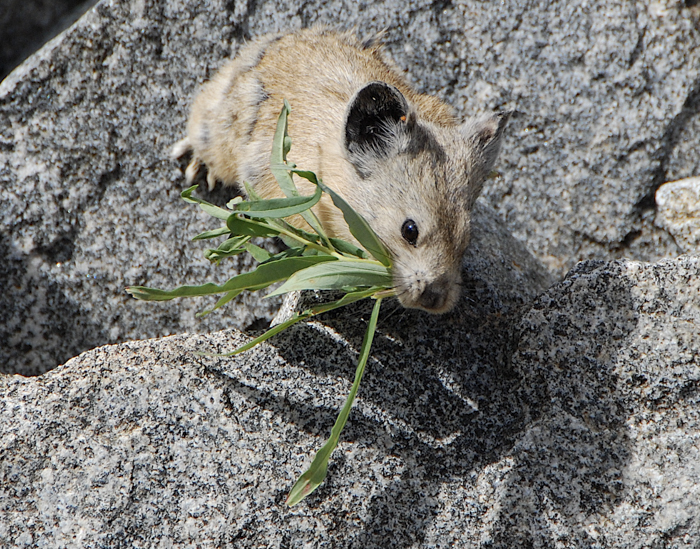Did you recognize the American Pika, Ochotona princeps from last week’s puzzler?
The American pika can be found throughout south western Canada and the western Untied States on rocky slopes. It is well-adapted to alpine climates with its thick fur and compact body. They are one of the few mammals in the lower 48 that can survive their entire lives in alpine terrain.

At first glance you may think of them like mice, or little rodents, but pikas are cousins of rabbits and hares, in the same order of Lagomorpha. Notice their fairly large ears! And even though you can’t see it because it is hidden in their fur, they do have a tail–the longest of the Lagomorpha.
If you’ve ever been on a rocky slope out west in a high mountain ecosystem, you may have heard a high-pitched call and wondered about the identity of the animal making it. Pikas live in colonies and communicate with each other through scent markings and vocalizations that to the casual observer, seem to be coming from no where.
What I think is most amazing about the pika is that it doesn’t hibernate during winter. Instead, it collects grasses and other herbs that it lays out in the sun to dry. Then, later, it stashes them in crevices where it can find them during the long winter. This is called haying.
Here’s a video from the Mother Nature Network of a pika collecting greens in preparation of winter:
Here’s the next puzzler–a weird, brain-like ball I found on the forest floor in Missouri.


Thanks for teaching us.
Thanks for reading!
Incredible footage!
Yes, someone had a lot of patience!